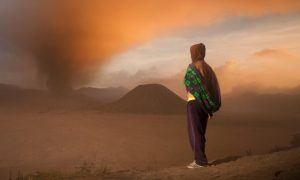Katy Guest in The Guardian:
 It can be reassuring to reassess life by taking a long view. In this book about “how the Earth made us”, Lewis Dartnell considers the last billion or so years, in his mission to understand how our planet has been “a leading protagonist in the story of humanity”. Our human bodies are, inevitably, made from the elements of Earth: our blood, sweat and tears come from the rocky fabric of its crust; our hair is made from volcanic debris. But Dartnell also explains how humanity became early civilisation and then the societies we live in now: how the formation of the Channel, through megaflooding events hundreds of thousands of years ago, “has had profound ramifications through history for Britain”; how Labour votes have followed coal seams laid down in the Carboniferous period. Never has geological history seemed so current.
It can be reassuring to reassess life by taking a long view. In this book about “how the Earth made us”, Lewis Dartnell considers the last billion or so years, in his mission to understand how our planet has been “a leading protagonist in the story of humanity”. Our human bodies are, inevitably, made from the elements of Earth: our blood, sweat and tears come from the rocky fabric of its crust; our hair is made from volcanic debris. But Dartnell also explains how humanity became early civilisation and then the societies we live in now: how the formation of the Channel, through megaflooding events hundreds of thousands of years ago, “has had profound ramifications through history for Britain”; how Labour votes have followed coal seams laid down in the Carboniferous period. Never has geological history seemed so current.
To cut a (very) long story short, we are the result of plate tectonics and ice ages. The crashing together of continents caused the cooling and drying of Earth, which enabled the growth of the grasses that form the basis of our diet, and humans to walk across the land out of Africa. The rocky hills of Greece demanded foot soldiers to fight battles there, each of whom had a say in events, helping to create democracy. A fascinating chapter explains trade winds, the age of exploration, colonisation and the “subsequent history of our world”. Dartnell is an eloquent, conversational guide to these daunting aeons of time. He writes of land masses swelling and bursting “like a huge zit”, and global warming “triggered by a great methane flatulence of the oceans”. And it is always useful to think about chronology. “Cleopatra lived closer in time to the modern world of iPhones,” he writes, “than she did to the ancient construction of the Great Pyramid at Giza.”
More here.
